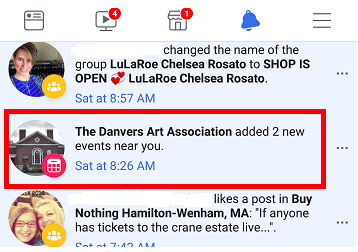Social media is a powerful tool for nonprofits to connect with their community and share their story. However, things are changing (all the time).
With an apparent desire to get back to their roots of connecting all of the world’s individuals and building a global community, Facebook alone has announced three significant changes just this year.
Each of these announcements has implications for nonprofits, brands, and businesses who post public and promotional content on Facebook Pages.
3 Facebook Changes in 2018
First Announcement
On January 11, Mark Zuckerberg announced on his page that “public content” – i.e., posts from Facebook Pages run by businesses, organizations, brands – would be less likely to show up in the News Feed to make way for more posts from friends.
In his words: “I’m changing the goal I give our product teams from focusing on helping you find relevant content to helping you have more meaningful social interactions.”
His statement led to a flurry of frantic posts, discussions, and debate around the question: Is Facebook killing Pages? (Short answer: No, they aren’t killing Pages. But they are making it harder and harder to stand out.)
Second Announcement
Then, on January 19, Zuck wrote that Facebook is going to actively work to weed out bad news sources on the site, prioritizing news that is “trustworthy, informative, and local.”
It is unclear how Facebook will determine what separates poor news sites from “trustworthy” ones, but I am sure we will all experience more surveys and most likely, fewer news stories in our Feed, in the coming weeks.
Third Announcement
Last week, the latest update was announced, and if it works as intended, it could be a boon for small, local nonprofits that struggle to get seen in the crowded News Feed.
Zuck wrote: “Starting today, we’re going to show more stories from news sources in your local town or city. If you follow a local publisher or if someone shares a local story, it may show up higher in News Feed.”
This is excellent news for small nonprofits who host local events, publish local news, and struggle to reach their community members on the most prominent social network.
7 Tips Your Nonprofit Can Use To Adapt To These Facebook Changes
Here are just a few tips for nonprofits in adjusting and adapting their social media strategy to address the new Facebook changes.
1. Get outside of your content comfort zone.
I’ve written about this before. The only way to succeed in digital marketing and social media is to have a strategy in place to consistently post compelling, relevant, valuable content that is focused on the needs and interests of your audience.
You cannot continue to post whatever you want to post.
You cannot continue to use social media like a billboard or a one-way advertising platform.
Yes, paid advertising does have its place on Facebook, but your regular, daily public-facing content must be audience-focused.
Resource: How to Create Your 2018 Nonprofit Content Strategy in Just 2 Steps
2. Post more video (live video especially).
The proof is in the pudding. Video is by far the most popular form of content shared on social media, on all platforms.
Check out these statistics:
- Videos on Facebook see an average of 135% more organic reach than images.
- Facebook users spend 3x more time watching live videos than a video that’s no longer live.
- They also comment more than 10x more during live videos.
Livestream surveyed customers and discovered that:
- 80% of respondents said they would instead tune into a live video than read a blog post.
- 82% of respondents were more interested in watching live video from a brand than reading social media posts.
Thankfully there are many free and low-cost tools that nonprofits can use to create, edit, and share more video on social media channels.
Resource: How to Use Your Smartphone to Make a Donor Thank You Video
3. Experiment with paid social media ads.
While there is still a lot that you can do with free content on social media, nonprofits need to begin experimenting with paid ads to get even more reach and exposure for specific posts on Facebook.
With over 1 billion daily active users sharing 4.75 billion pieces of content every day on the social network, launching a Facebook Ad campaign can set you apart and help you reach a targeted audience.
You can boost posts or tweets that have already been posted to give them added exposure, or you can execute stand-alone advertising campaigns around a specific call-to-action.
Resource: The Nonprofit Facebook Ad Planner
4. Create Facebook Events for local happenings.
Facebook is pushing notifications for local events to their users.
For example, I now get notifications if nonprofits that I follow on Facebook, that are local to me, are hosting local events, such as The Danvers Art Association:

5. Focus on email.
Email is not dead, and it’s not going anywhere. According to Nonprofit Tech for Good:
- There are currently 6.3 billion email accounts worldwide, and the number is expected to grow to 7.7 billion by 2021 – a growth rate of 22%.
- Email accounted for 26% of all online revenue in 2016 and grew 14% over 2015.
- The number of smartphone users worldwide has reached 2.4 billion and is projected to grow to 6.1 billion by 2020.
- 56% of email opens are now mobile.
Email remains the best way to communicate with a large group of people at scale – when done correctly and when email campaigns are carried out strategically.
Resource: 10 Ways to Use Social Media to Grow Your Nonprofit Email List
6. Explore Facebook Groups.
Groups may now get priority over Pages since they promote “meaningful interactions” (in many cases).
You may want to consider starting a Facebook Group for your nonprofit.
Facebook said:
“In Groups, people often interact around public content. Local businesses connect with their communities by posting relevant updates and creating events. And news can help start conversations on important issues.”
Resource: The Essential Beginner’s Guide to Nonprofit Facebook Groups
7. Sign up for Instagram.
Yes, Instagram is owned by Facebook. The advantage of Instagram is that it is not cluttered with links and click bait, since (except for paid ads), you cannot post hyperlinks on Instagram other than the one in your bio.
This gives way to a unique, aesthetically pleasing visual experience, with eye-catching photos and videos taking center stage.
Not only that, but Instagram continues to grow wildly while many social media sites are stagnating in getting new users. Instagram has over 800 million monthly active users, including 38% of women in the U.S. and 26% of men.
Resource: 5 Ways to Promote Your Nonprofit’s Fundraising Message on Instagram
Conclusion
Zuck said himself that Facebook’s focus in 2018 is to “make sure Facebook isn’t just fun but also good for your well-being and for society.”
It remains to be seen what the exact results will be of these changes, but I’m an optimist!
Join us for the live webinar!
Editor's Picks
Ultimate Guide To Peer-to-Peer Fundraising
Customer Story: Spur Local Raises Over $1M With Their Give Local Campaign
Fundraising Strategies for Nonprofits: Craft the Best Approach for Your Organization
Create a Killer Fundraising Plan - Best Practices, Strategies, & Downloadable Template



